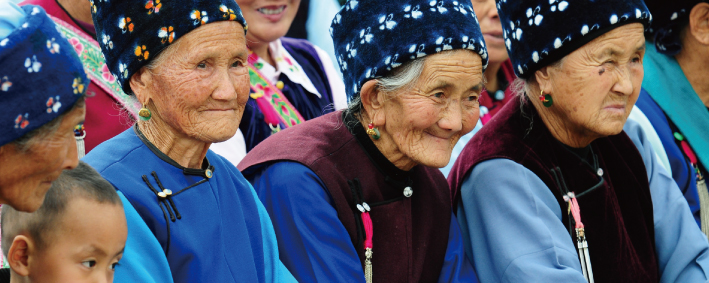 |
CCCH9027 China: Culture, State and Society
|
Course Description
[This course has a ‘flipped classroom’ format. There are short lectures at the start (required), then video lectures supported by online learning material. Much of the time-tabled lecture time is swapped for collaborative learning activity.]
Contemporary China is a multiethnic state with a 116 million population. Ethnic autonomous areas occupy 50% of the country and 90% of the borders with 16 other countries. The government officially recognizes 55 ethnic minority groups based on their historical origin, mode of production, language, culture, customs, religion, and a sense of solidarity.
What interethnic processes are at work in multiethnic China? How does the state manage interethnic relations? What is the balance between centralization and ethnicization? What is the difference between pluralism and assimilation? What has China learned from the experience of other multiethnic countries? What can other multiethnic countries learn from China’s experience?
This course examines how China’s civilization, institutions, laws and policies address the challenge of multiethnic integration. The focus is on four challenges: economic development, social equality, cultural autonomy, and interethnic integration. The course presents an opportunity to learn about China’s many ethnic groups. Students from different Faculties of the University can access knowledge about the variety of ethnic customs, languages, religious practices, scientific beliefs, health and traditional medical practices, architectural styles, music, art, dance, and how these engage with modernization and sustainable development of land and resources. The course examines how the education system is shaped by ethnic identities. Finally, the course will debate the pros and cons of preferential treatment policies for ethnic minorities.
Students in the class can also share their own ethnicity, their interethnic experience, visits to ethnic communities inside and outside of China and consider what it means to be ethnic in China. The course promotes the idea of cross-cultural communication as a way to bridge the differences between your own culture and the cultures of other ethnic groups locally, regionally, and globally. Finally, the course questions the meaning of multiculturalism, including as it works in Hong Kong as a world super-connector city.

Course Learning Outcomes
On completing the course, students will be able to:
- Articulate a broader perspective and a deeper critical understanding of the policy issue of how to balance centralization and ethnicization.
- Explain how to better navigate the similarities and differences between your own and other cultures amid the forces of pluralism and assimilation.
- Identify practical strategies of intercultural communication that help make you more fully participate as individuals, members of social groups, and citizens in global, regional, and local communities.
- Propose creative ways to improve the quality of lives of members of your and other cultural groups.
Offer Semester and Day of Teaching
First semester (Wed)
Study Load
| Activities | Number of hours |
| Lectures | 24 |
| Tutorials | 10 |
| Online course material | 24 |
| Reading / Self-study | 36 |
| Assessment: Essay / Report writing | 34 |
| Assessment: Presentation (incl preparation) | 40 |
| Total: | 168 |
Assessment: 100% coursework
| Assessment Tasks | Weighting |
| Group project and presentation | 40 |
| Research paper | 50 |
| Reflection writing | 5 |
| Tutorial participation | 5 |
Required Reading
Reading assignments average one hour per week. Excerpts of the following readings will be made available on Moodle:
- Chen, Y. -B. (2020). From “Lamb Kebabs” to “Shared Joy”: Cultural Appropriation, Ignorance and the Constrained Connectivity within the “One Belt, One Road” Initiative. Journal of Contemporary China, 29(121), 1-16.
- Ge, Z. (2018). What is China? Territory, ethnicity, culture, and history. Cambridge, Massachusetts: Harvard University Press. [pp. 134-148]
- Postiglione, G. (2009). Ethnic minorities in China. Berkshire encyclopedia of China. USA: Berkshire Publishing Company. [pp. 763-770]
- Postiglione, G. A. (2009). Dislocated education: The case of Tibet. Comparative Education Review, 53(4), 483-512.
- Sun, Y. (2020). From Empire to Nation State: Ethnic Politics in China. Cambridge University Press. [Chap. 1 “What is destabilizing about China’s ethnic regions?” (pp. 1-24)]
- Wang, Gung Wu. (1991). The Chineseness of China. Oxford University Press. [pp. 1-7]
Course Co-ordinator and Teacher(s)
| Course Co-ordinator | Contact |
| Professor G.A. Postiglione Faculty of Education (Social Contexts and Policies of Education) |
Tel: 2859 2526 Email: gerry@hku.hk |
| Teacher(s) | Contact |
| Professor G.A. Postiglione Faculty of Education (Social Contexts and Policies of Education) |
Tel: 2859 2526 Email: gerry@hku.hk |

